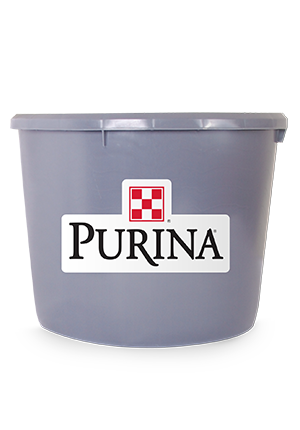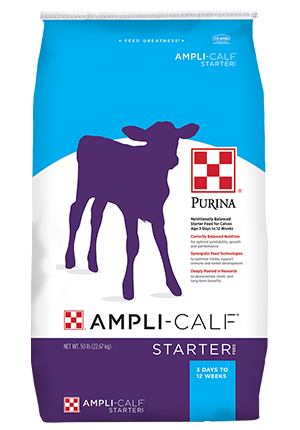
Overhaul your thinking when it comes to dairy-beef cross cattle
Calf : Dairy-Beef Cross
Animal : Calf

Over the last several years, many dairy producers across the country have bred a percentage of their dairy cow herd with beef semen to produce dairy-beef cross calves intended for beef. This practice has been a way to diversify producers’ income in a volatile dairy market. Now, with record low native beef herd numbers and a growing demand for high-quality beef, dairy-beef crossbred programs also have the opportunity to help stabilize the beef supply, if done right.
We understand some beef producers are concerned this practice could impact the native beef market share, but, in fact, it is only amplifying the quality of the U.S. beef supply by making more prime- and choice-graded beef readily available for consumers in the U.S. and in export markets.
Although dairy-beef cross calves will inherently be more consistent and heavier muscled than their all-dairy breed counterparts because of their beef genetic influence, research has shown that early calf care and nutrition can have a significant impact on the future growth and performance of a dairy-beef crossbred calf.
Similarly, if the calf is fed a restrictive diet or a diet low in essential nutrients, it is a challenge to make up for the loss in growth potential. Neonatal nutrition, like calf care, can impact overall quality grade. Additionally, when the calf is young and as they grow, they lay down fat cells in the muscle tissue, which is the development of intramuscular fat or marbling. Marbling is the fat component that gives beef its flavor. When the animal is fed a restrictive or low-quality diet, the body cannot appropriately produce and lay down fat cells, leading to a poorer quality grade. So, properly caring for and feeding a higher plane of high-quality nutrition in the preweaning phase is very important for future growth and overall performance.
To learn more, talk with your Purina representative or visit purinamills.com/dairy-beef today.
References:
1 Schneider MJ, Tait RG, Busby WD, Reecy JM. An evaluation of bovine respiratory disease complex in feedlot cattle: Impact on performance and carcass traits using treatment records and lung lesion scores. J. Anim. Sci. 2009; 87:1821-1827.
©2023 Purina Animal Nutrition LLC. All rights reserved.
We understand some beef producers are concerned this practice could impact the native beef market share, but, in fact, it is only amplifying the quality of the U.S. beef supply by making more prime- and choice-graded beef readily available for consumers in the U.S. and in export markets.
Although dairy-beef cross calves will inherently be more consistent and heavier muscled than their all-dairy breed counterparts because of their beef genetic influence, research has shown that early calf care and nutrition can have a significant impact on the future growth and performance of a dairy-beef crossbred calf.
Early calf care
Just like your beef calves, dairy-beef calves properly cared for early in life have a greater potential for optimal growth and performance. Hygiene, high-quality colostrum and assistance in the transition to milk replacer and starter feed all contribute to the calf’s start and impact their finish.High-quality neonatal nutrition
Optimal nutrition in the neonatal stage is critical for growing consistent, healthy and efficient dairy-beef crossbred calves that produce high-quality beef. Crossbred calves fed a higher plane of milk replacer with at least 20% protein at 1.8 lbs. and a starter ration composed of 22% protein per day will improve overall pre-weaning efficiency and sets them up for optimal performance and efficiency post-weaning.Why are care and nutrition so critical?
If the calf’s birth is mismanaged, we can expose them to bacteria and viruses that can lead to illnesses, such as bovine respiratory disease (BRD) and other recurring health challenges that can negatively impact calf growth and performance, specifically average daily gain (ADG) and carcass quality, which are important performance indicators for crossbred calves. For every individual case of BRD, the calf’s quality grade is impacted by one-third of a grade point and ADG is decreased by .10 lb./day.1 Once a calf contracts BRD and is treated, there is no way to reverse the effect of the disease.Similarly, if the calf is fed a restrictive diet or a diet low in essential nutrients, it is a challenge to make up for the loss in growth potential. Neonatal nutrition, like calf care, can impact overall quality grade. Additionally, when the calf is young and as they grow, they lay down fat cells in the muscle tissue, which is the development of intramuscular fat or marbling. Marbling is the fat component that gives beef its flavor. When the animal is fed a restrictive or low-quality diet, the body cannot appropriately produce and lay down fat cells, leading to a poorer quality grade. So, properly caring for and feeding a higher plane of high-quality nutrition in the preweaning phase is very important for future growth and overall performance.
Why should you care?
Regardless of the origin, U.S. consumers want to eat high-quality beef. When it comes to answering the climbing demand, when native beef numbers are at their lowest, dairy-beef cross cattle can help contribute to the high-quality product that packers and consumers already know and expect from U.S. beef producers.To learn more, talk with your Purina representative or visit purinamills.com/dairy-beef today.
References:
1 Schneider MJ, Tait RG, Busby WD, Reecy JM. An evaluation of bovine respiratory disease complex in feedlot cattle: Impact on performance and carcass traits using treatment records and lung lesion scores. J. Anim. Sci. 2009; 87:1821-1827.



